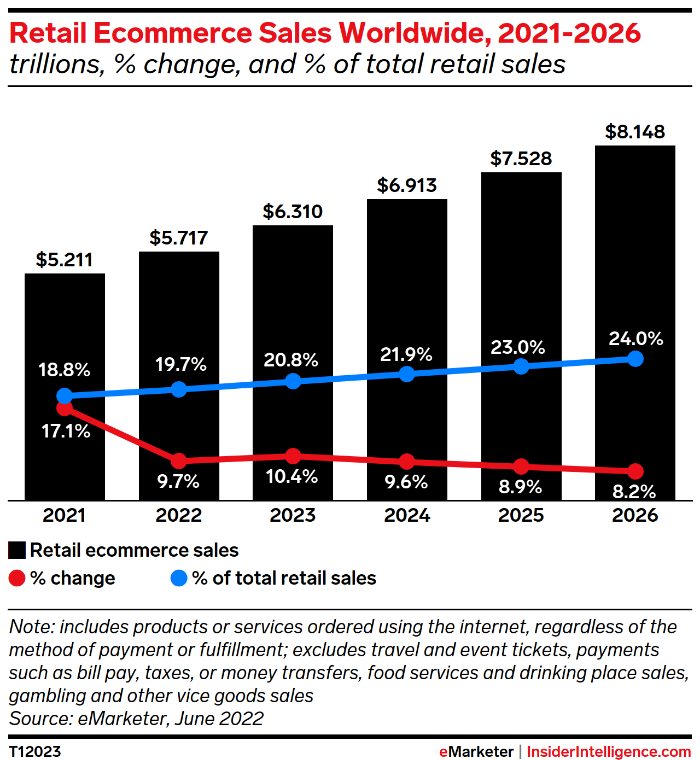Table of contents
Starting a business is always competitive, whether you are in the online or offline market. You might be confident that your products can provide a solution for customers, but how you can occupy their minds is quite a challenge. That is why marketers are relentlessly trying to establish a successful market positioning that can distinguish them from others, putting the brand and product in an insurmountable position in the market.
With the advent of e-commerce, millions of businesses see it as their chance to grow and join this field. Therefore, being distinctive online not only requires basic positioning but also certain strategies exclusively for E-commerce.
This may seem to be tough work but it’s not impossible. In this post, we will help you to better understand what market positioning is, its benefits, and how to establish one for your E-commerce business.
Is market positioning different in e-commerce?
Definition of market positioning
Positioning is far from a tagline or a sound slogan for the company or product, though it’s usually expressed in the form of a sentence.
Market positioning means establishing a clear, distinctive, and desirable image or identity of a brand or a product in customers’ minds in relation to its competitors.
For instance, a car manufacturer can present itself as a sign of luxurious status. While a battery manufacturer may promote its products as the most dependable and durable. An electronic product maker lets people see them as the most innovative and cutting-edge.
Market positioning requires business owners to answer 3 main questions:
- Who are my ideal customers?
- How to make them know I am the best option?
- How to get them to see my products or services?
Types of market positioning
Choosing an aspect to leverage into “a signature” that can differentiate a product or brand from others, here are some common aspects or strategies current businesses attain.
Product attributes and benefits
This market positioning strategy associates the product or brand with significant characteristics or benefits that exceed those of other similar products. There are physical and emotional benefits attributed to the products. To use the physical attributes, the product itself must have distinguishing features to suit its customer base and be able to beat other ones in the market. Usually, this can be implemented through innovations.
When most attributes seem to be unchanging, brands will find one or two key features to focus on and then add emotional values to win over similar products. To do this, businesses have to research their customers’ needs, favorites, and barriers deliberately and pay more attention to how the product can effectively change their lives or way of thinking.
Pricing
Besides the product’s quality and functionality, buying decisions also depend on how much clients are willing to pay. With this strategy, many businesses make a clear statement about how competitive their price is, which is executed in three ways.
The first is to set higher prices for the product to make target customers think it is top-notch and of better quality. The second approach is to lower the price, becoming more affordable and attractive than alike products to buyers on a tight budget.
These strategies require an actual grasp of clients. With the former, they would expect quality and be willing to pay more. Meanwhile, with the latter, they would care less about it and more about purchasing products that satisfy their needs with smaller expenses.
The third one is an in-between strategy where brands still offer more value but charge a lower price. The purpose is to compete with high-end competitors and become more attractive to those who want to optimize their payment. Businesses mainly do this through discounts and promotional offers.
Product Quality
The right target consumers intend to pay more for products of superior quality, whether that quality is real or perceived. This strategy succeeds in the luxury market where brands promote their products through superb durability, high quality, special origin, limited distribution, or linking with reliant endorsements and higher status.
Competitive positioning
This strategy influences customers’ minds through direct comparisons to highlight uniqueness. You will strike the attack with what you offer better than others, rather than addressing their pains or needs. To make it easier to imagine, an e-commerce business will state that its shipping services are much quicker than those of other stores instead of emphasizing how fast delivery would benefit its customers.
Niche segmentation
Targeting a micro-level market segment and becoming the leading solution provider for it.

Online businesses’ market positioning is no different from that of traditional businesses. Simply try to make you outstanding and make your customers perceive you as the best choice for them. But due to its digital nature and tech-heavy characteristics, some website strategies need to be put into consideration. The three leading online buying decision elements are range, ease and convenience, and price comparisons. Therefore, e-commerce businesses can focus on which aspects their sites can deliver best to provide a “superior” experience for online shoppers.
For example, an American online shoe retailer called Zappos offers distinctive customer service procedures. They reply to each and every email they receive, even if it is addressed to the CEO of the business.
Benefits of a good market positioning
No one can deny how fast-growing e-commerce is. With the accessibility of the worldwide Internet and the huge number of smartphone users, e-commerce rapidly becomes familiar and turns into an advantageous opportunity for retailers to reach more and more customers, thus increasing profits.
According to eMarketer, the online retail market share accounted for 19.7% of total retail sales in 2022, and this figure is projected to accelerate in the coming years.

B2B e-commerce evolves, and wholesale e-commerce is going online too. Now, there are over 25 million online businesses and thousands of e-commerce platforms. The number of shoppers also rocketed throughout the years, not just with millennials or Gen Z but with older shoppers moving online as well. As a result, e-commerce becomes too competitive, and this poses a headache issue for businesses on how to set themselves apart from other rivals in the market.
Hence, having a good market positioning really helps:
Win your customers’ interest and advocacy
When you and your customers share a specific value or you can address your customers’ pain points, you certainly make a good impression. Especially through quality and feeling strategies, your business will develop an intangible bond with your customers and becomes more preferential. Customers also feel somehow intimately connected and loyal to you.
Stand out from your competitors
With so many competitors on the market, buyers have so many great options to choose from. You cannot lose your potential customers to others, even though you are totally capable of providing what they need. Customers tend to remember the distinctive ones and who comes to offer the solution first. Therefore, identify what your competitors don’t have, whether it is price, uniqueness, quality, etc., then capture it and make it a competitive edge to stand out from them.
Increase product sales
When a brand succeeds in creating a unique market position that drives customers’ perception, trust, and favor, it can expect a bigger volume of buyers (and maybe their friends too via recommendations). Therefore, a boost in sales is assertive.
Enable better decision-making
A clear positioning means extensive research of the customer base and the market segment. It gives a clear direction to your marketing plans and brand activation. By gaining more insights, you are likely to receive positive results for any improvements and further strategies.
Less effort to introduce new products or added features
Launching a new product and breaking into the market is simpler for a business that has already established its position in the industry. Also, with a competitive base, changes in the existing products’ qualities and/or features can be used to position them against competitors. This would save you a lot of money and effort.
How to establish an effective market positioning for your E-commerce business
A market positioning creates clarity around who you serve. It also explains to your target audience why you are the best company for them and what sets your products or services apart. It helps you justify your pricing strategy.
So how do you do it?
Research and find your target audience
The competition is fierce, and to win in the market, it’s a must to choose the exact target customers and understand where you are standing in their eyes. Then you develop your strategies from there.
The first task is segmentation. It starts with identifying who your products’ or services’ potential customers are. These customers can be divided into groups based on common traits (demographics, psychological ones like attitudes, or beliefs). Find the segments with traits that make them different from other segments. You must employ traits that are simple to recognize and that have enough impact on consumers’ purchasing decisions. Also, to be considered a meaningful segment, it must lead to significant sales volume.
Once you work out the segments, you need to decide which one to go after, as you cannot satisfy all of the customers. This is called Targeting. It’s a process to define the attractiveness of a segment. The target audience can be derived from a deeper analysis of their characteristics, needs, emotional motivations, and shopping behaviors. Still, the target segment needs to be qualified by size, profitability, and growth ability.

Particularly in e-commerce, the attractiveness of a segment is shown if it is willing to pay more for better services, has many loyal shoppers, or has a low level of competition.
To achieve this, you need to carry out customer surveys yourself or hire an agency to do that. The survey can give you an assessment of
- your product’s strongest selling points;
- any obstacles or setbacks;
- the values and features that are most important to customers.
What’s more, you should regularly check customer reviews on your sites and engagement on social media to see both positive and negative views from your target market.
Analyze the competitors
Obviously, to stand out in the market, you can’t ignore who is offering a similar solution to yours and what competitive advantage they have.
List all of the possible competitors and substitutes and break down their strengths, and weaknesses; what gives them the advantage to compete; and especially what needs or demands from the customers that they fail to satisfy. Then you may figure out something you can surpass or else find another aspect to hit on.
For e-commerce businesses, take a further step by becoming a real customer to experience your rivals’ online stores. You may consider some of these factors to assess:
- Audience engagement
- Target audience demographics
- Past and current marketing efforts
- Cultural factors
- Current marketing tactics
Understand your Unique Selling Proposition
What market positioning’s all about is what you can offer better than your competitors. Your Unique Selling Proposition (USP) differentiates your brand from the competition as well as highlights something unique about your business and product. A USP is either found in your product’s nature or created by adding other valuable benefits. It’s something that you offer that cannot be found elsewhere. However, a USP should also be valued by your target audience and should be consistently delivered.
Develop a market positioning strategy
To work this out, mind 2 things: frame of reference and point of difference.
The frame of reference defines which category or market landscape you play in. It can be seen as how and where you can meet your target audience’s needs. For example, if you run a toothpaste business, the possible landscapes are preventing cavities, teeth whitening, or for braces.
With each category, there are some competitors out there, which means you have to find your point of difference. A point of difference (PoD) has a similar notion to a USP and must hold strong, favorable, and unique brand associations. Especially it should be sustainable to play the game for a prolonged period. A PoD may involve performance attributes, benefits, or imagery association.
Remember all the strategies above? Those are some key suggestions to identify your Point of Difference.
Examples:
Nike: Nike has positioned itself in the shoe market as an innovator with a high focus on performance, followed by a top pricing strategy.
HubSpot: The finest portrayal of “inbound marketing,” HubSpot developed a huge customer-oriented platform by offering a helpful “all-in-one” deal and useful content to its readers.

For E-commerce, the frame of reference affects how you set up your store website, your range, stock management, and order-to-delivery procedures.
When most e-commerce sites offer rather similar functional benefits, it’s harder to stand out. So emotional benefits or values play a vital role in the awareness and consideration stage. This is also why many e-commerce stores try their best to personalize the customer experience and attached emotional value to it.
Combining all that with the target audience, brand/products, benefits, and sometimes with brand personality, you can develop a market positioning for your business.
Communicate your market positioning to the customers
This is where you turn that market positioning into a message to tell your valuable customers and include it in every form of communication you will execute. The positioning statement resembles a company’s mission statement as it expresses its identity and goals. With the statement, you spell out your target customers with any challenges to encounter or any desires to pursue. Then justify how the product or service would beneficially and distinctively solve it.
A market positioning statement may look like this:
(Brand/Product) is the (frame of reference) that (benefits) (target audience) because (point of difference).
Furthermore, use common activities like advertising, content marketing, newsletters, social media, promotions, and direct mail to reinforce your positioning.
Some mistakes to avoid when establishing a market positioning
- Keep changing the product features or values, making people hard to connect with the positioning.
- Choosing a too-niche market that cannot guarantee sales
- Fail to create a distinctive image in customers’ minds to differentiate from others
- Too-good-to-be-true positioning makes customers question your validity




